Lighting, Metameric Failures, and DNG Camera Profiles
Back in 2013, I wrote an article about metameric failures cause buy using various cheap fluorescent lights, as some more expensive video grade CFLs. Back then I had read a study done by the Academy of Motion Picture Arts and Sciences that looked at the quality of light problems with what they called “solid state” lighting — meaning not tungsten or HMI lights, so things like CFLs, LEDs, and Plasma lights.
At the time, one of my limitations was that I didn’t have a calibrated way to white balance and judge color. I tired as best I could to work around that limitation but it was still a practical shortcoming.
The lack of a solid standard all changed when I got my X-Rite Colorchecker Passport. This is not only a calibrated standard, but also contains perfectly neutral gray targets to white balance with.
With the new color checker in hand, I wanted to revisit my previous test, in no small part, because I wanted to see if DNG camera profiles could do anything to minimize/mitigate the metameric failure and deliver good color reproduction.
My understanding of the theory is that you can’t calibrate out a metameric failure with a DNG camera profile. At least not unless the Colorcheker fails in exactly the same way that the intended object being photographed does. However, I still wanted to see if there were gains that could be made.
Additionally, the whole test would also serve as a repeat of my previous test, only this time I had a properly neutral calibrated color target to white balance with — which was one of the limitations in the previous test. That would eliminate some potential sources of error in the previous test too.
Unfortunately, I did bugger up the test a little, by allowing some ambient light to enter the scene form a source I couldn’t completely control. This is most obvious in the low wattage CFL images as it shows up as highlights and lifted shadows along the left side of the images. When I get another bit of spare time, I’ll try to repeat these tests with better control over the exact light sources.
I couldn’t recreate the previous scene exactly, the best I could do was grab a random sample of materials in different colors and see if there were shifts in color. The one known that returned from the previous test was the old fashion Maxwell House coffee tin. Both the reds and blues in that exhibited a shift when switching from Tungsten to CFL in my previous test.
Lighting was provided by a 24″ Lastolite ExBox with only one of the diffusion panels in place and the light at the rear.
| Lamp | Color Temp | Wattage |
|---|---|---|
| Commerica Electric CFL | 6500K | 19W |
| FJ Westcott CF | 5500K | 50W |
| Kino Flo | 5500K | 26W |
| Tungsten Photo Flood | 3200K | 260W |
The following images show the white balanced images using the canned Adobe Standard camera profile and the white balanced images with the custom DNG profile based on the target. Due to the nature of the light source, the tungsten images should be used as a reference point.
As far as conclusion go, my goof with the uncontrolled light source does affect the image, so you I would strongly suggest not drawing any kind of serious conclusions from these images. However, there are still color shifts even under the high-CRI photo-grade CFLs.
One other note. F.J. Westcott advertises their 50 W CFL to be equivalent to 200 W. Based on the exposure times in this test, that seems to be a good approximation. There was a 1/3rd stop difference in shutter speed, for a 50W difference in power (1 stop less power would be 125 W). So 200W seems like a good number. Of course, this is a daylight color temp lamp not a tungsten color temp one, so if you were to gel to daylight you’d have even more effective power.
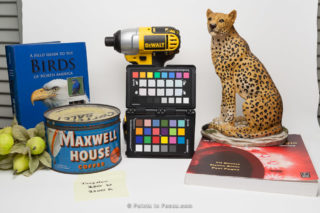
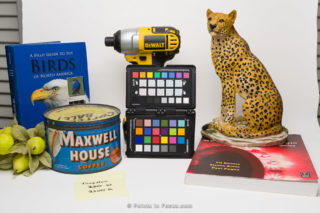
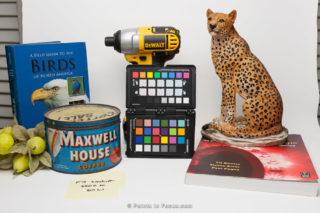
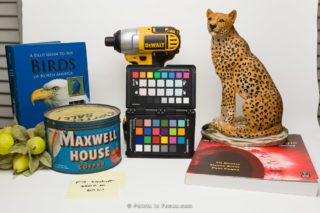
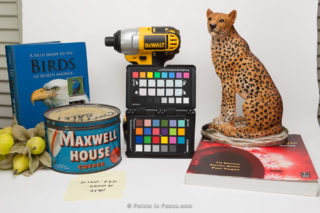
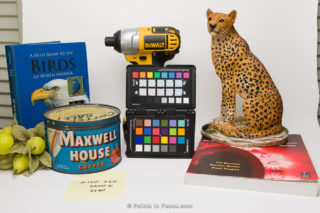
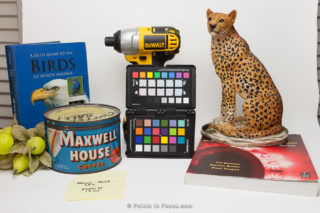
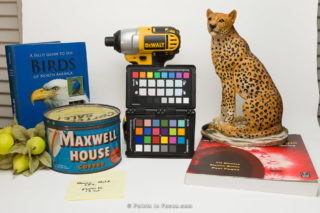
Comments
There are no comments on this article yet. Why don't you start the discussion?